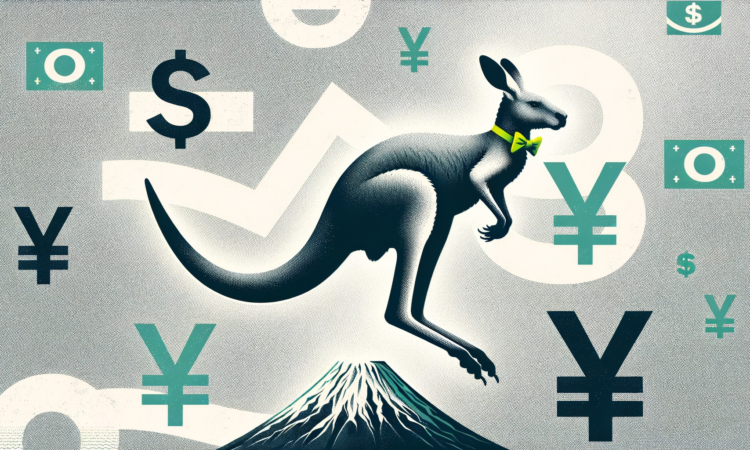
What’s going on here?
The Australian dollar surged to an 11-year high against the Japanese yen, driven by robust carry trade demand and steady interest rate expectations.
What does this mean?
Australia’s hawkish monetary stance, articulated by the Reserve Bank of Australia (RBA), has significantly influenced currency markets. A recent policy presentation reduced the likelihood of an RBA rate cut this year from 64% to 36%, with expectations now set for the first cut by Q2 2025. This unexpected shift has made the Aussie dollar more attractive for carry trades, where investors borrow in low-yielding currencies like the yen to invest in higher-yielding assets. Meanwhile, the market remains dovish on the Reserve Bank of New Zealand (RBNZ), which is seen as likely to cut rates sooner. This divergence has kept the Kiwi dollar firm, although it lags the Aussie’s strength. The Aussie appreciates this stable rate outlook, climbing 0.7% overnight to 105.19 yen and firming to $0.6661 against the US dollar.
Why should I care?
For markets: Investors eye Australia’s steady ship.
The Australian dollar’s steady rise and low volatility in interest rates make it an attractive option for carry trades. With international central banks moving towards rate cuts, Australia’s predictable monetary policy sets it apart, encouraging investors to shift their capital into the Aussie as a safe and profitable bet.
The bigger picture: Australia’s economic resilience.
Australia’s economic foresight and stable policy backdrop bolster investor confidence. As other economies grapple with high inflation and potential recessions, Australia’s firm stance portends a period of fiscal stability and targeted growth. This could make Australia a more significant player on the global economic stage, influencing geopolitics and trade relations.


